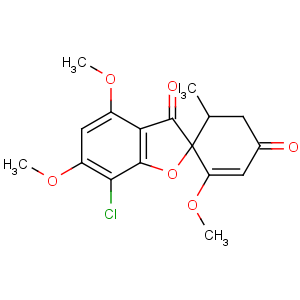Title: Guar Gum
CAS Registry Number: 9000-30-0
Synonyms: Guar flour; gum cyamopsis; cyamopsis gum; Burtonite V-7-E
Trademarks: Decorpa (Norgine); Guarina (Norgine); Glucotard (Boehringer, Mann.); Guarem (Shire)
Literature References: Mol wt about 220,000. The ground endosperms of
Cyamopsis tetragonolobus (L.) Taub.,
Leguminosae which is cultivated in India as livestock feed. The water soluble fraction (85%) of guar flour is called guaran which consists of linear chains of (1?4)-b-D-mannopyranosyl units with a-D-galactopyranosyl units attached by (1?6) linkages. Ratio of D-galactose to D-mannose is 1:2. Effect on lipid metabolism: D. J. A. Jenkins
et al., Br. Med. J. 2, 1555 (1979); on glucose and lipid levels in diabetic and healthy volunteers: U. Smith, G. Holm,
Atherosclerosis (Shannon, Ire.)
45, 1 (1982); on renal tumors in diabetic rats: B. C. Chin
et al., Biomed. Res. 5, 273 (1984). As source of fiber in patients with non-insulin dependent diabetes: M. E. McIvor
et al., Am. J. Clin. Nutr. 41, 891 (1985). Toxicology studies: S. L. Graham
et al., Food Cosmet. Toxicol. 19, 287 (1981). Comprehensive monograph: F. Smith, R. Montgomery,
The Chemistry of Plant Gums and Mucilages (Reinhold, New York, 1959) 627 pp.
Review: Goldstein
et al. in
Industrial Gums, R. L. Whistler, Ed. (Academic Press, New York, 2nd ed., 1973) p 303-321. Comprehensive description: K. Yu
et al., Anal. Profiles Drug Subs. Excip. 24, 243-276 (1996).
Properties: White to yellowish white, nearly odorless, free flowing powder. Dispersible in hot or cold water, forming a colloidal solution. Slightly sol in water but not in organic solvents. Water solns are tasteless, odorless, nontoxic, of a pale, translucent gray color, and neutral. Stable to heat. Has five to eight times the thickening power of starch. Water solns may be converted to a gel by small amounts of borax. Aq dispersions are neutral.
Cf. "A Comparative Study of Commercially Available Guar Gums" by I. A. Schlakman, A. J. Bartilucci,
Drug Stand. 25, 149-154 (1957). LD50 in male, female rats (g/kg): 7.35, 6.77 orally (Graham).
Toxicity data: LD50 in male, female rats (g/kg): 7.35, 6.77 orally (Graham)
Use: In paper sizing; as a protective colloid, stabilizer, thickening and film forming agent for cheese, salad dressings, ice cream, soups; as a binding and disintegrating agent in tablet formulations; in pharmaceutical jelly formulations; in suspensions, emulsions, lotions, creams, toothpastes; in the mining industry as a flocculant, as a filtering agent; in water treatment as a coagulant aid.
Therap-Cat: Adjunct to diet, insulin or oral hypoglycemics in control of diabetes.

